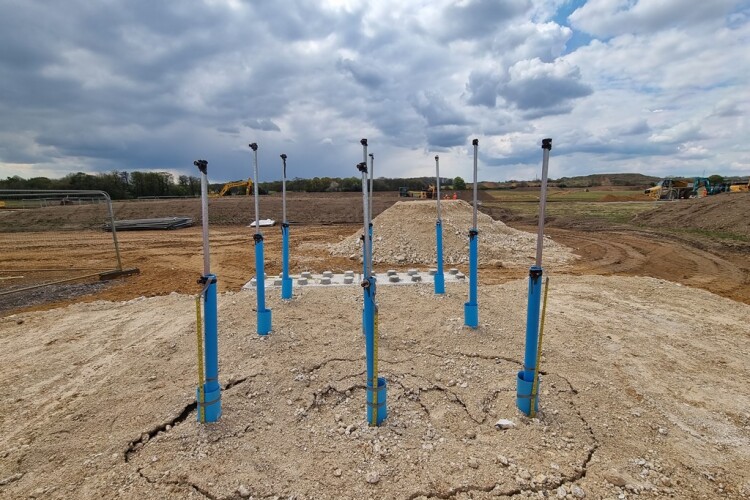The fibre optic technology can sense the smallest ground movements and so could help prevent land slips and detect the formation of sink holes.
The implications are said to be ‘potentially far-reaching’, with the prospect of huge savings in maintaining HS2 embankments and railway cuttings, as well as the wider railway and road networks.
Under a collaborative programme at HS2’s Chilterns tunnel south portal site, the University of Cambridge’s Centre for Smart Infrastructure & Construction (CSIC) and geosynthetics manufacturer Huesker have teamed up to create Sensorgrid, a standard ground-stabilising mesh woven with fibre optic cables.
The team, which also included HS2 contractor Align and its designer Jacobs, along with infrastructure monitoring specialist Epsimon, dug a test pit at the site to trial the smart grid technology by simulating ground movement.
Heavy-duty water-filled bags were laid in the base of the pit, sections of Sensorgrid were laid over it and then buried. Monitoring equipment then generated pulses of light that travelled through the fibre optic cable. To simulate ground movement, water was released from the bags, causing the weight of the ground above to move and strain the mesh, which in turn causes a change in characteristics of the light pulsing through it.
The trial showed that Sensorgrid can detect small ground movements earlier and more effectively than established ground monitoring techniques.

The team estimates that on construction costs alone, preventive action enabled by Sensorgrid would be a tenth the cost of repairing ground that has failed. The benefits of disruption reduced or avoided would be in addition to this saving.
The technology is now undergoing a full scale live trial elsewhere at HS2’s South Portal site near the M25 motorway. Two kilometres of Sensorgrid has been incorporated into a cutting for the railway. It will provide continuous data to the monitoring team over the next two years.
HS2 Ltd innovation manager Rob Cairns said: “Sensorgrid is a great example of how we’re leveraging HS2’s size and scale to draw on British expertise to develop a technology and demonstrate its innovative capability in the early stages of construction. This will act as a test bed for proving out significant benefit to the operational railway, with long term benefits in bolstering the resilience of the UK’s transport network.”
Align innovation manager Nick Podevyn added: “A lot of hard work has gone into this innovation, which has been in incubation for more than a year. It has been an exemplar of open collaboration and working as one team to deliver the solution.”
CSIC operations manager Cedric Kechavarzi said: “Sensorgrid opens a wealth of new opportunities to use fibre optic sensing in geotechnical applications, as it vastly improves strain transfer from the soil to the sensor.”
Got a story? Email news@theconstructionindex.co.uk



